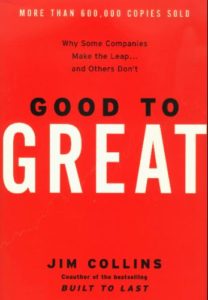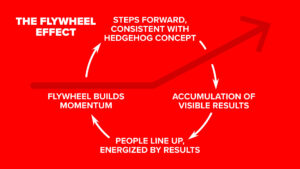Good To Great- Why Some Companies Make The Leap… and Other‘s Don’t
Author- Jim Collins
Genre- Management
James Collins loved Stanford University – doing his undergrad, then MBA and then teaching career from there (won distinguished teaching award). In between, he worked for top companies like Mckinsey and HP. In 1995, he founded a management laboratory where he conducts research and also teaches CEOs, Senior leadership, executives from the corporate and social sectors. In 2017, Forbes selected Jim as one of the 100 Greatest Living Business Minds.
Good to Great has been cited by many CEOs as “the best management book they have ever read” and was in Time’s list of 25 Most Influential Management Books ever. The book talks about a company making a transition from Good to Great. These were okay/good companies but then truly moved to becoming Great companies. To identify the great companies, Collins and his team selected 1435 good companies and examined their performance over 40 years and finally out of those 1435 companies selected 11 companies that became great. These were Abbott, Circuit City, Fannie Mae, Gillette, Kimberly-Clark, Kroger, Nucor, Philip Morris, Pitney Bowes, Walgreens and Wells Fargo. To ensure quantitative rigour, all these good to great companies had:
- 15 years of cumulative stock returns at/ below the general stock market
• A distinct transition point
• Followed by cumulative stock returns of >3 times general market over the next 15 years
These 11 companies were then compared against 2 groups of companies: the first group being companies from same industry (with similar circumstances but couldn’t make that leap), and the second being the group of “comparison companies” that made the leap but didn’t sustain the performance. E.g. Bank of America was the comparison company to Wells Fargo.




 This information will never be shared with third party
This information will never be shared with third party
Post A Comment
Want to join the discussion?Feel free to contribute!